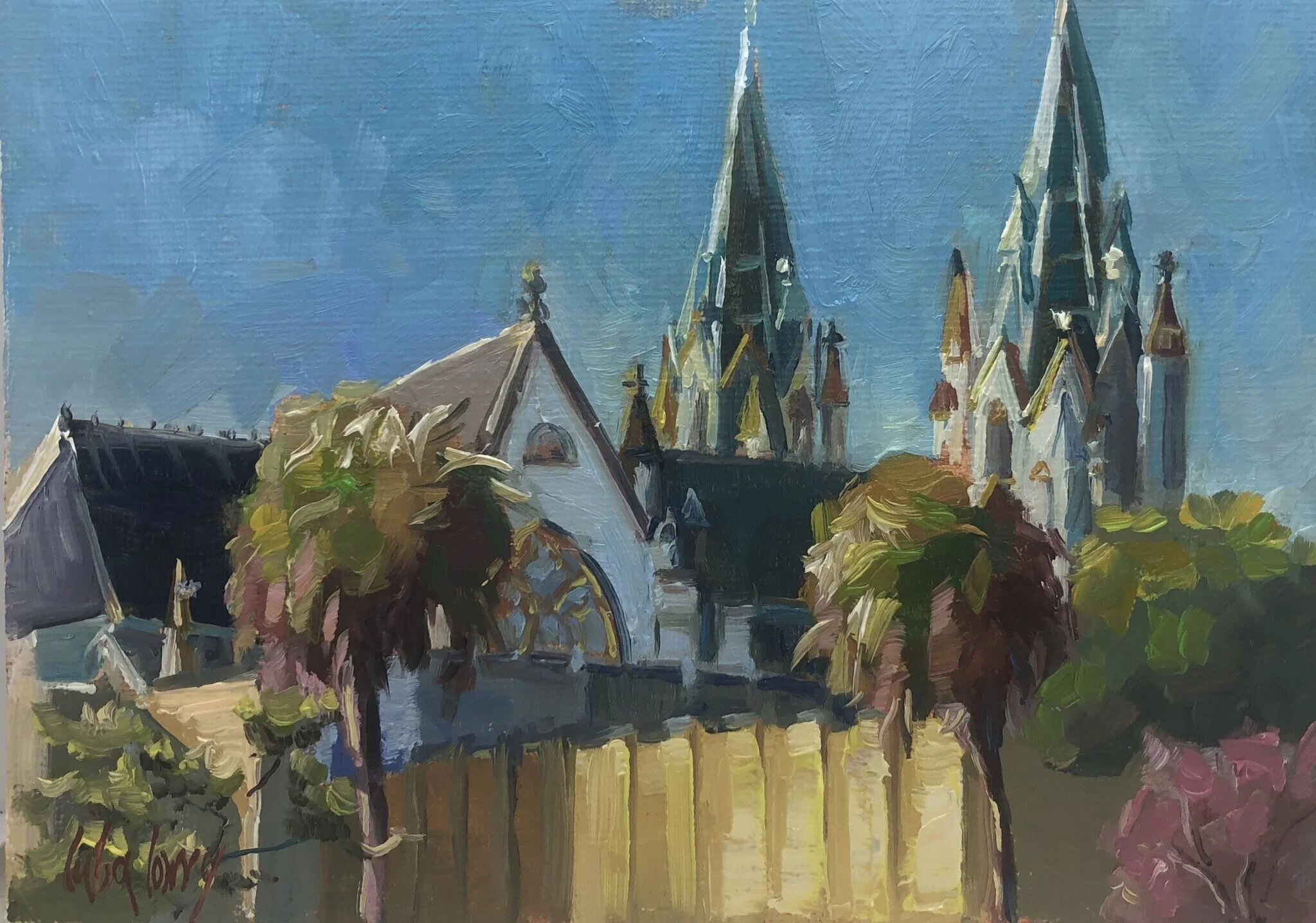#12: The Cathedral of St. John the Baptist
“A story is a way to say something that can’t be said any other way, and it takes every word in the story to say what the meaning is. You tell a story because a statement would be inadequate. When anybody asks what a story is about, the only proper thing is to tell them to read the story. The meaning of fiction is not abstract meaning but experienced meaning.”
—Flannery O’Connor
The Cathedral of St. John the Baptist
Savannah has a long religious heritage and is a city teeming with amazingly beautiful, diverse and distinctive churches, congregations and synagogues—each carrying within an inspiring spiritual story.
I have painted the Cathedral of St. John the Baptist several times. When painting this magnificent structure en plein air, I prefer an alternative to the normal full-frontal view.
In this case, I am positioned well behind the building. And, as a result, I am less overwhelmed by the enormous structure, and can instead focus mainly on the two spires piercing into the clear sky above.
This wonderful cathedral is the oldest Roman Catholic Church in the state of Georgia. Inspired by early French Gothic architecture, the cathedral was designed by E. Francis Baldwin. It was officially dedicated in 1876, and was later rebuilt due to a fire.
At its founding, Savannah banned Catholics; the Georgia Colony was initially designed as a British military stronghold to impede Spanish influence or northern expansion from Florida. Only after Spain traded Florida to Great Britain in 1763 was Catholicism allowed to be openly practiced in Savannah.
Author Flannery O’Connor was born in Savannah in 1925. Her writing was mostly known for its ‘grotesque’ characters from the south, and reflected her devote practice of the Roman Catholic religion.
What she says above about writing can easily apply to painting. Each painting, as well, has its own meaning that is usually experienced differently by each person who spends the time observing it.
In fact, in addition to writing, O’Connor did enjoy practicing the visual arts. She began cartooning at an early age and became known as the ‘cartoon girl’ while she attended the Georgia State College for Women, where she graduated in 1945.
I’ve mentioned the many movies I enjoyed that were filmed in Savannah. I also devoured Flannery O’Connor’s novel ‘Wise Blood’ (1952) while attending the Savannah College of Art and Design. Later, I came upon director John Huston’s film version (1979) of O’Connor’s story, available for rental on Amazon. Well worth watching, I’d say, as the film reflects so well the grotesque and eccentric characters O’Connor was known for creating…her stories are always shocking, violent and unnervingly dark.
My goodness, Hazel Motes would have fit right in with all the strange characters at a Jim Williams party held at the Mercer-Williams house! But I won’t ruin the story for you. First, go read it; then watch it.
As Flannery O’Conner once said: “Anything that comes out of the south is going to be called grotesque by the northern reader, unless it is grotesque, in which case it is going to be called realistic.” Exactly.
Oh, and by the way, Flannery (2019), a new documentary film about Flannery O’Connor is to be seen.
Luba’s Cathedral of St. John the Baptist painting in progress.


